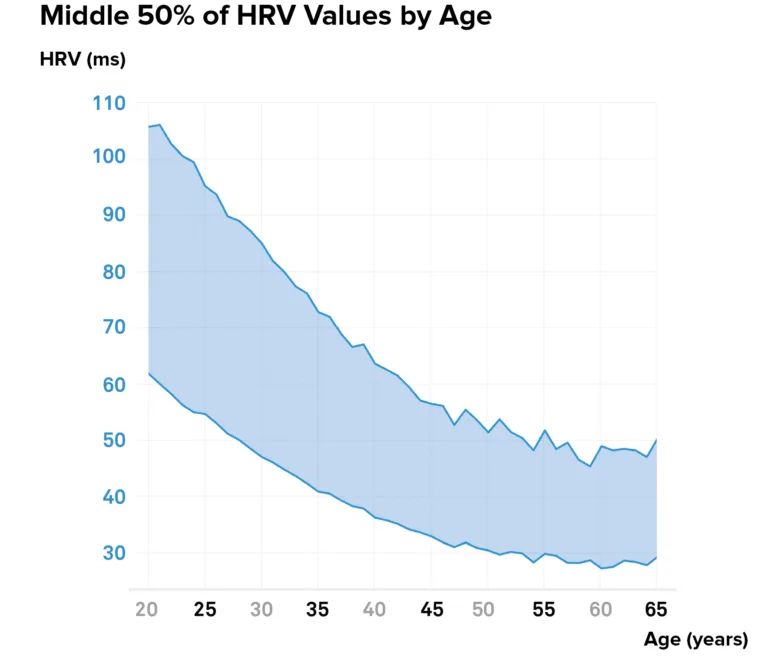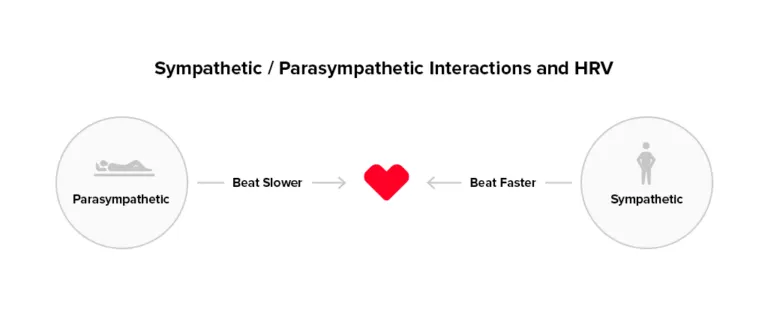Heart Rate Variability (HRV)
Heart rate variability is the variance in time between the beats of your heart.
The greater this variability is, the more “ready” your body is to execute at a high level.
Whoop articles:
- Everything You Need to Know About Heart Rate Variability (HRV)
- What is a Good HRV? It Varies for Everyone
- 10 Ways to Increase Your Heart Rate Variability (HRV)
- Why Athletes Should Want High Heart Rate Variability
Other articles
- https://www.health.harvard.edu/blog/heart-rate-variability-new-way-track-well-2017112212789
- https://www.health.harvard.edu/blog/heart-rate-variability-new-way-track-well-2017112212789
What causes HRV?
HRV is caused by two competing branches of the autonomic nervous system, sympathetic and parasympathetic:
- Parasympathetic nervous system (“rest and digest”, decreases heart rate) handles inputs from internal organs, like digestion or your fingernails and hair growing
- Sympathetic nervous system (“fight or flight”, increases heart rate) reflects responses to things like stress and exercise
See Sympathetic vs. Parasympathetic Nervous System.
A balanced nervous system
your nervous system is balanced, your heart is constantly being told to beat slower by your parasympathetic system, and beat faster by your sympathetic system. This causes a fluctuation in your heart rate: HRV.

When you have high heart rate variability, it means that your body is responsive to both sets of inputs (parasympathetic and sympathetic). This is a sign that your nervous system is balanced, and that your body is very capable of adapting to its environment and performing at its best.
if you have low heart rate variability, one branch is dominating (usually the sympathetic) and sending stronger signals to your heart than the other. There are times when this is a good thing—like if you’re running a race you want your body to focus on allocating resources to your legs (sympathetic activity) as opposed to digesting food (parasympathetic activity).
However, if you’re not doing something active low HRV indicates your body is working hard for some other reason (maybe you’re fatigued, dehydrated, stressed, or sick and need to recover), which leaves fewer resources available to dedicate towards exercising, competing, giving a presentation at work, etc. To look at it another way, the less one branch is dominating the other, the more room there is for the sympathetic (activating) branch to be able to come in and dominate, which is why high HRV suggests you’re fit and ready to go. Learn More: Why Athletes Should Want High HRV.
